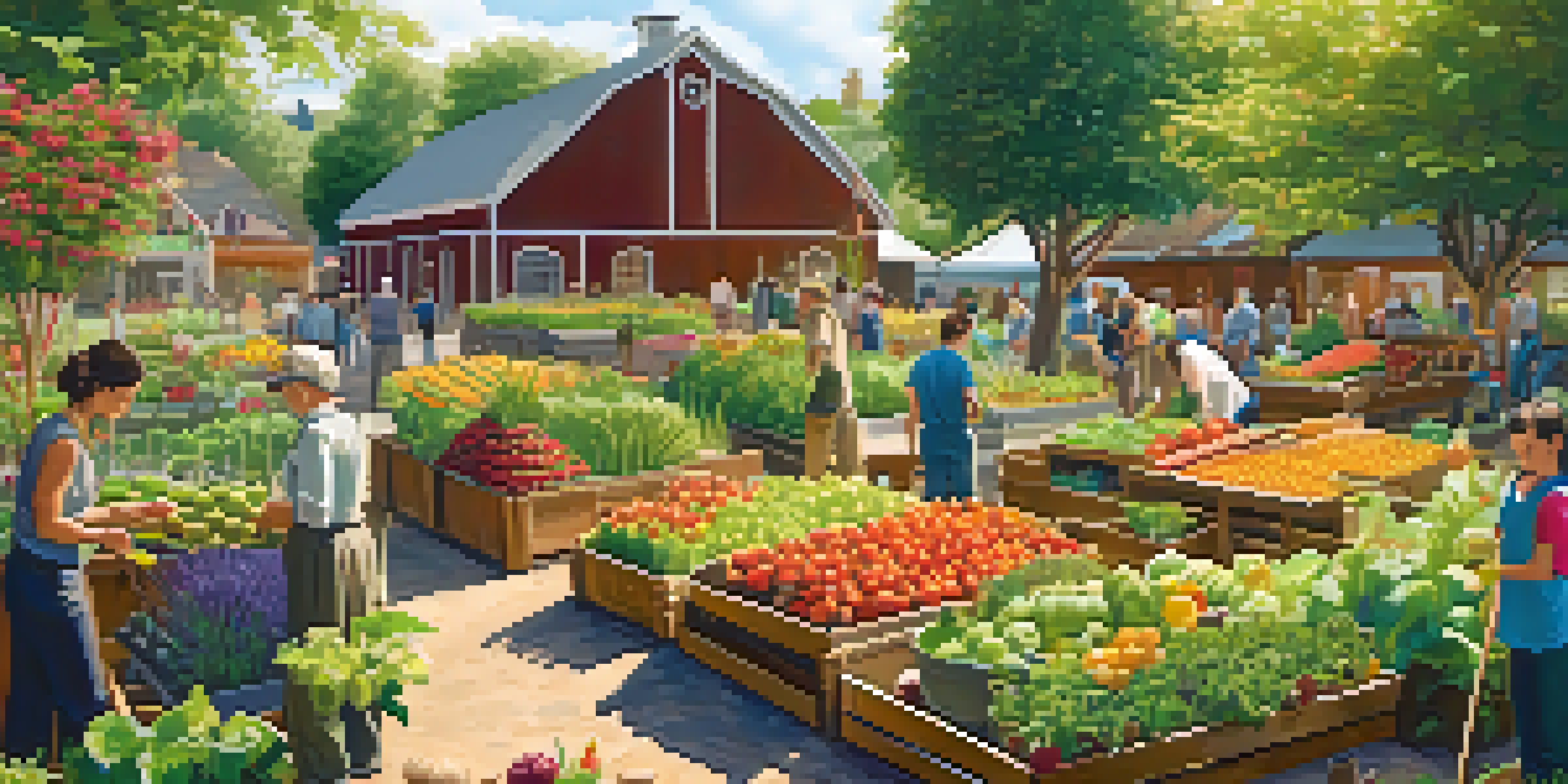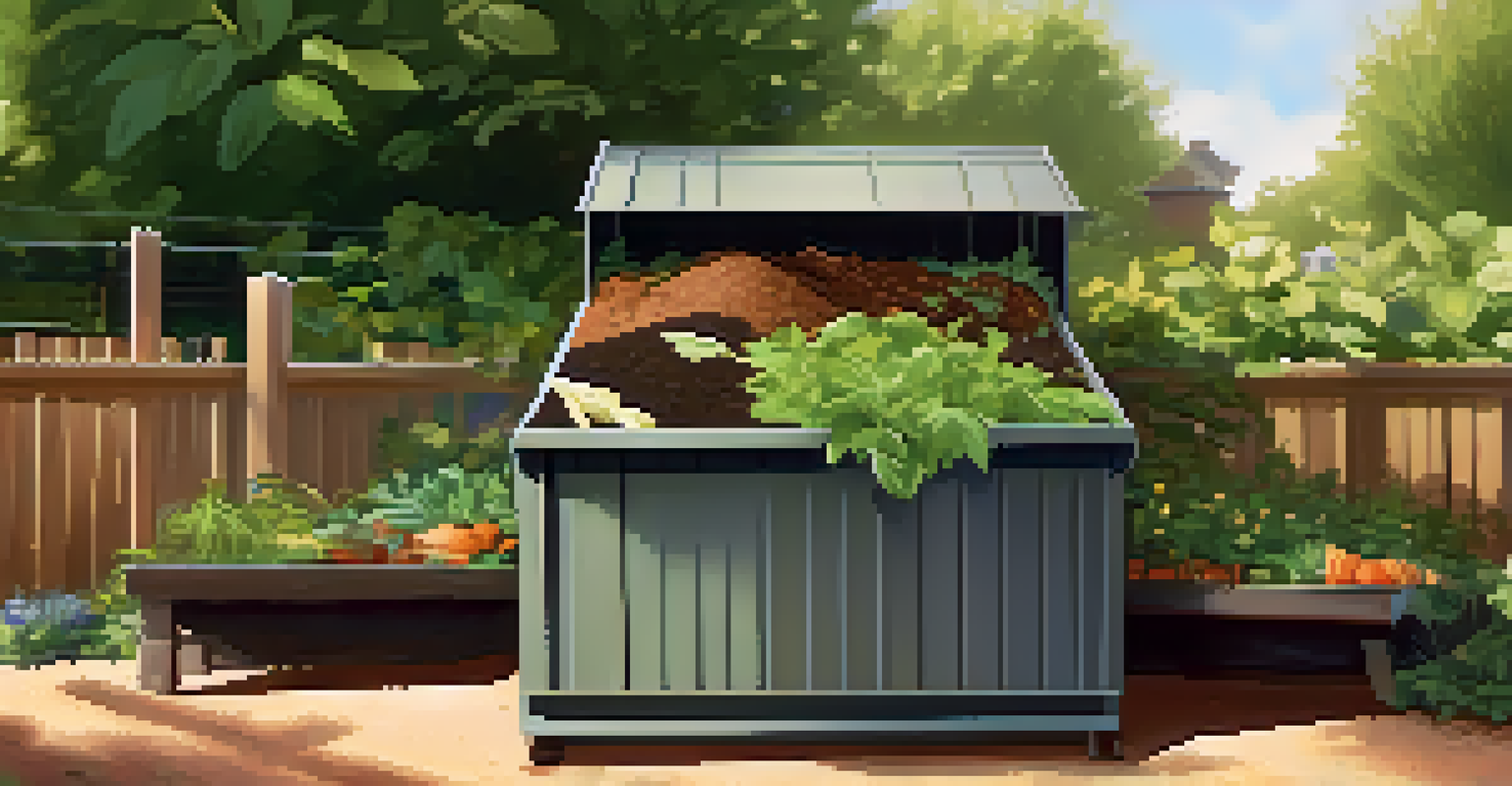Community Gardens: Building Resilience Against Climate Adversities

Understanding Community Gardens and Their Benefits
Community gardens are shared spaces where individuals come together to grow fruits, vegetables, and flowers. These gardens not only provide fresh produce but also foster community spirit and collaboration. They are often established in urban areas where access to green spaces is limited, allowing residents to cultivate their own food.
The greatest threat to our planet is the belief that someone else will save it.
One of the key benefits of community gardens is their ability to promote biodiversity. By encouraging a variety of plants, these gardens create habitats for beneficial insects and pollinators, which are crucial for a healthy ecosystem. Additionally, they serve as a vital resource for education, teaching members about sustainable gardening practices and the importance of food security.
Moreover, community gardens can act as a buffer against climate adversities. By nurturing local food sources, they reduce reliance on long supply chains, which can be disrupted by extreme weather conditions or global crises. This self-sufficiency not only strengthens community ties but also enhances resilience to climate change.
The Role of Community Gardens in Climate Resilience
Community gardens play a pivotal role in building resilience against climate change by promoting sustainable practices. By using organic methods, such as composting and crop rotation, these gardens minimize reliance on chemical fertilizers and pesticides, which can harm ecosystems. This sustainable approach helps to protect local soil and water resources.

In addition, the presence of green spaces like community gardens can mitigate urban heat effects. Plants absorb sunlight and provide shade, effectively cooling their surroundings. This cooling effect is particularly important in cities, where heat islands exacerbate the impact of rising temperatures due to climate change.
Community Gardens Boost Biodiversity
By promoting a variety of plants, community gardens create essential habitats for beneficial insects and pollinators.
Furthermore, community gardens can serve as crucial resources during climate emergencies. They can provide immediate access to fresh foods when supply chains are interrupted, helping communities to remain nourished and connected. This adaptability is essential in fostering a resilient community that can bounce back from adversities.
Fostering Community Connections Through Gardening
Community gardens are more than just plots of land; they are vibrant hubs of social interaction and collaboration. People from diverse backgrounds come together to share gardening tips, celebrate harvests, and even host events. This shared experience strengthens community bonds and creates a support network that can be vital during challenging times.
Gardening adds years to your life and life to your years.
These gardens also encourage a sense of ownership and pride among participants. When individuals contribute their time and effort to grow something meaningful, it fosters a deeper connection to the land and the community. This sense of belonging can motivate residents to take an active role in other community initiatives and climate resilience efforts.
Moreover, community gardens can inspire future generations to engage with nature and understand the importance of sustainable practices. Educational workshops and hands-on activities help instill a love for gardening, as well as an appreciation for the environment, ensuring that the values of resilience and sustainability are passed down.
Sustainable Practices in Community Gardens
Sustainability is at the heart of community gardening, with many gardens adopting eco-friendly practices. For instance, using native plants can reduce water consumption and provide habitats for local wildlife. Additionally, rainwater harvesting systems can be implemented to collect and utilize rainwater for irrigation, minimizing the use of municipal water.
Composting is another vital practice in community gardens. By recycling kitchen scraps and yard waste, gardeners can create nutrient-rich soil amendments that enhance plant growth while reducing landfill waste. This closed-loop system exemplifies how community gardens can contribute to a more sustainable urban environment.
Gardens Enhance Climate Resilience
Community gardens help communities adapt to climate change by providing local food sources and promoting sustainable practices.
Furthermore, many community gardens are now exploring permaculture principles, which focus on creating self-sustaining ecosystems. By mimicking natural processes, these gardens not only yield food but also promote soil health and biodiversity, showcasing the potential of sustainable agriculture in combating climate challenges.
The Economic Impact of Community Gardens
Community gardens can have a significant economic impact on local communities. By providing access to fresh produce, they can help reduce food costs for families, especially in food deserts where grocery stores may be scarce. This direct access to affordable, healthy food can improve overall community health and well-being.
Moreover, community gardens can stimulate local economies by creating opportunities for small-scale farmers and entrepreneurs. Workshops, farmer's markets, and other events can attract visitors, generating income for local businesses and fostering a sense of community pride. This economic activity can be crucial in supporting the resilience of neighborhoods, especially during economic downturns.
In addition, community gardens can enhance property values in the surrounding areas. Well-maintained green spaces contribute to the overall aesthetic appeal of neighborhoods, making them more desirable places to live. This can lead to increased investments in the community and further bolster its resilience against economic challenges.
Challenges Facing Community Gardens
Despite their many benefits, community gardens face a range of challenges that can hinder their effectiveness. Limited access to land is often a significant obstacle, particularly in urban areas where real estate is at a premium. Securing long-term leases or agreements with property owners can be difficult, creating uncertainty for gardeners.
Additionally, funding and resources can be scarce. Many community gardens operate on tight budgets, relying on donations and volunteer efforts to sustain their operations. Without adequate financial support or access to tools and materials, these gardens may struggle to thrive, especially as they try to adapt to climate-related challenges.
Economic Benefits of Community Gardens
These gardens reduce food costs and stimulate local economies, contributing to overall community health and resilience.
Furthermore, community gardens can face issues related to governance and community engagement. It’s essential for all members to feel included and valued in decision-making processes to ensure the success of the garden. If conflicts arise or if certain voices dominate discussions, it can lead to disengagement and weaken the community bond.
The Future of Community Gardens in Climate Resilience
Looking ahead, community gardens hold great promise in building resilience against climate adversities. As awareness of climate change grows, more communities are recognizing the importance of local food systems and sustainable practices. This shift in perspective can lead to increased support for community gardens and similar initiatives.
Innovative technologies and sustainable practices will likely play a key role in the future of community gardening. From vertical gardens to hydroponics, new methods can help maximize space and improve food production efficiency. These advancements can empower communities to adapt to changing climates while still enjoying the benefits of homegrown food.

Ultimately, the future of community gardens hinges on collaboration and community engagement. By fostering connections between different stakeholders, including local governments, non-profits, and community members, these gardens can continue to thrive and serve as vital resources in the fight against climate change. Together, we can cultivate a more resilient future.